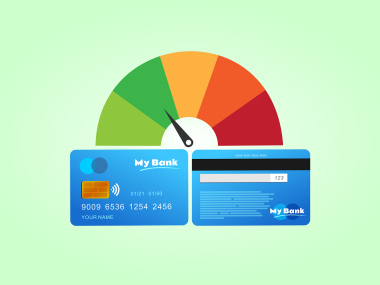Steering the financial landscape of the United States can be challenging. With various factors playing pivotal roles, the credit score stands out as a critical element that shapes your fiscal opportunities. Comprehension of your credit score and its considerable weight in financial decision-making is imperative for anyone looking to secure loans, buy homes, or even start a business.
In this comprehensive article, we delve into the nuances of the credit score in the United States and unearth strategies to manage and leverage for your benefit.
What Is A Credit Score And Why Is It Important In The United States?
Your credit score is a three-digit numerical grade that signifies your creditworthiness to lenders and financial institutions. It fluctuates from 300 to 850, and the higher your number, the less risky you are perceived to be.
Securing favorable loans, affordable insurance, and desirable housing often pivots on this pivotal score. Your credit score in the United States is like a financial report card; it encapsulates your reliability in handling credit based on historical data.
- The score is derived from your credit history, which includes your record of repaying loans and managing debt.
- It’s essential because it determines not just whether you qualify for credit but the terms and rates you receive on those financial products.
- High scores can unlock lower interest rates, saving you significant money over the term of a loan.
- Employers, insurers, and landlords may also peek at your credit score when making decisions that can affect your life.
- Maintaining excellent credit is thus crucial for anyone in the U.S. wishing to harness the full range of financial options.
How your score is assessed
Experts have pinpointed five key factors that feed into the creation of your credit score.
- Payment history: Ensuring bills and debts are paid timely, plays the most critical role.
- Credit utilization: Strive to only use a small slice of your available credit to keep your score high.
- Age of credit: Older credit accounts can contribute positively, showcasing a longer credit management history.
- Types of credit: A diverse mix of credit (like car loans and credit cards) can be beneficial.
- New credit: Each new credit application can slightly dent your score, as they indicate potential new debt.
A robust understanding of these factors illuminates the path to optimizing your credit score for the future.
How Is A Credit Score Calculated In The U.S.?
When assessing your financial prowess, credit bureaus in the U.S. use either the FICO scoring model or the VantageScore system to assign a score. The scoreboard, ranging from 300 to 850, hinges on intricate algorithms reflecting your credit conduct. While the exact formula is proprietary and complex, the large puzzle pieces are well-known and remarkably consistent across different scoring models.
Five elements crystallize into your final credit score:
- Payment history: This chronicles whether you pay your bills on time and is the most influential factor.
- Amounts owed: Also known as credit utilization, it looks at how much credit you’re using versus what’s available.
- Length of credit history: Older accounts can improve your score by demonstrating a longer track record of credit management.
- Credit mix: A varied portfolio of account types, such as credit cards, retail accounts, installment loans, and mortgages, can strengthen a credit score.
- New credit: Frequent applications for new credit can suggest financial instability, thus lowering your score.
Understanding and optimizing these factors is key to elevating your credit score in the U.S.
Specifics on improving each component
- Timely payments: Automate bill payments to avoid late fees and keep your payment history clean.
- Manage balances: Pay down debts and maintain low credit card balances to reduce your utilization ratio.
- Preserve old accounts: Keep older credit accounts open and active, as this positively influences your credit length element.
- Consider credit types: Evaluate your portfolio—revolving credit (like credit cards) and installment loans (like a mortgage) can showcase your credit management skills.
- Limit credit inquiries: Only apply for new credit when necessary. Each inquiry could slightly reduce your score.
A little attention to each of these areas can lead to substantial gains in your credit score over time.
What Range Is Considered A Good Credit Score In The United States?
In the ecosystem of U.S. finance, a solid credit score is your golden key to unlocking advantageous credit opportunities. A score nesting between 670 and 739 is dubbed “good” by FICO’s standards, paving the way to trust and reliability in the eyes of lenders. This bracket is where fiscal responsibility begins to truly pay off, equating to lower interest rates, premium credit card offers, and a smoother financial journey.
Scores above this threshold leap into the “very good” and “excellent” domains, further sweetening potential deals and offers. As such, angling for a score within or above this range should be paramount for those wishing to wield their credit with confidence and advantage.
Perks of different score ranges
- Good (670-739): The threshold for better-than-average loan and credit card interest rates typically begins here.
- Very Good (740-799): This scoring range often attracts lower mortgage and auto loan rates, making long-term borrowing much cheaper.
- Excellent (800-850): At the pinnacle of credit scoring, consumers can enjoy the lowest possible rates and exclusive financial products.
It’s clear that as your score ascends, your financial prospects do, too – highlighting the importance of nurturing a healthy score.
How Can I Check My Credit Score And How Often Should I Do It?
There’s a wealth of options for keeping tabs on your credit score in the United States, from the major credit bureaus, Equifax, Experian, and TransUnion, to financial institutions offering free score checks for clients. The digital age furnishes tools like Credit Karma and the federally sanctioned AnnualCreditReport.com, providing yearly free reports and scores.
Regular credit checks shield against identity theft and inaccuracies, ensuring your financial portrait remains pristine. A yearly peek should suffice, but if you’re on the cusp of major financial commitments or suspect foul play, checking more frequently is prudent.
Tactical steps for credit score checks
- Regularly authenticate the accuracy of your credit report; spot any blunders swiftly.
- Align credit report checks with significant financial events.
- Utilize free resources annually and tactically subscribe to more frequent updates if necessary.
You can adeptly navigate the U.S. financial terrain by proactively managing your credit score through regular checks.
What Are Some Effective Ways To Improve My Credit Score?
As the barometer of your financial trustworthiness, a sterling credit score can open doors to a world of fiscal opportunity. Herein lies a guide to sculpting a score that gleams with promise and potential:
– Resolve to punctuality in bill payments; your reliability here is pivotal.
– Erode your debts, chiefly those of the revolving sort, to polish your credit utilization to a shine.
– Scour your credit reports and expunge any inaccuracies that mar them.
– A mosaic of credit types managed with aplomb displays your versatility in financial dealings.
– Steer clear of the temptation to spawn new credit accounts in rapid succession; it casts a shadow on your score.
Implementing these strategies offers the surest ascent to an enviable position on the credit score ladder.
Roadmap to a high credit score
- Consistent payment history: Sustain impeccable payment timeliness.
- Optimized debt levels: Keep your credit card balances well below the limits.
- Error-free credit reports: Command precision by verifying your credit report’s accuracy.
- Strategic account diversification: Calibrate the mix of your credit accounts to demonstrate well-rounded financial acumen.
Intelligent new credit approaches: Be circumspect about new credit applications; each new account or inquiry can have an ephemeral dampening effect on your credit score.
Adhering to these steps elevates your credit score and your comprehensive financial well-being.
What Is The Highest Credit Score?
Reaching the zenith of the credit score scale, 850 is the most illustrious figure within both the FICO and VantageScore models. Symbolizing impeccable financial health, this apex score is elusive but not unattainable.
The constructs of perfect credit lie in a harmonizing act—meticulous payment punctuality, moderate credit utilization, a seasoned credit history, and prudent account management are the keystones.
While it’s a remarkable goal, hovering above 800 confers similar honors—unrivaled lending terms and utmost creditor esteem. Striving for this loftiest of scores is applaudable, yet a credit score in the “excellent” range is more than sufficient to command the best financial offers.
Significance of attaining the highest possible score
- It exemplifies flawless credit health, rewarded with the creme de la creme of financial opportunities.
- Very few individuals will pin down an 850, yet the benefits largely parallel those found with scores starting at 800.
- An exceptional score is an undeniable asset, as it can sway the terms of financial agreements heavily in your favor.
While an 850 is the holy grail of credit scores, your efforts are best placed in consistently healthy credit practices rather than chasing perfection.
Highest Credit Score In The United States
Eclipsing the rest, the 850 score towers are the grand pinnacle in the U.S. credit score terrain, a bastion of near-mythical regard. Though attaining such rarefied heights may seem an Arcadian dream, even those above the threshold of 800 are lionized with preferential lending rates, financially fortifying as much as greater peace of mind offers.
The value of a high credit score
- Embodying fiscal responsibility, these paragons of credit aptitude sway terms in their favor.
- A multitude dwells in the average, between 600 and 750, but rising to the summit bestows tangible rewards: premium credit access and uncompromised borrowing power.
- Beyond the mere score, the symbiosis of frugal behaviors and strategic financial planning cultivates the prosperity high scores portend.
Thus, nurturing a high credit score is pragmatic, providing leverage and latitude in the often unpredictable realm of personal finance.
Credit Score Range Chart
Envision creditworthiness as a spectrum painted in the numerals of your credit score. In their graded hues from 300 to 850, these digits signal to lenders whether you are a risk or a reward. Charting these figures offers a compass by which to navigate the potential receptiveness of financial institutions.
The Spectrum Of Credit Scores
- Bad (300-629): A challenging zone where credit approvals are rare and expensive if granted.
- Fair (630-689): A step up, revealing doors slightly ajar to borrowing, albeit with higher costs.
- Good (690-719): Borrowing terms grow more agreeable here, and credit becomes more accessible.
- Very Good (720-779): Beneficial borrowing terms abound for those within this cadre.
- Exceptional (780-850): The apogee of credit scores where premium offers from lenders are to be expected.
Taking stock of where you reside on this continuum can inform your financial ambitions and guide your journey towards credit improvement.
Is A 900 Credit Score Possible?
Brevity is the soul of clarity: 850 marks the end of the line in the U.S. credit system. Tales of a 900 credit score are but a mirage, distorted by the variety of scoring models or misconceptions regarding credit ratings.
Actions that push your score towards the 850 mark are admirable, but know that beyond the 760-780 range, you’re entering a privileged tier already rewarded with premier credit offers.
Myth-Busting The 900 Credit Score
- Ironclad credit habits over time are the secret to scaling the heights of the high 800s.
- The focus should be not on an unreachable summit but on steadfastly paving the path to the realm of excellent credit scores.
As such, charting a course towards a mythic 900 serves little practicality; instead, aim to mount the tangible heights of excellent credit through judicious financial maneuvering.
The Path Forward
In summary, your credit scores in the United States is nothing short of the groundwork of your financial building. It influences everything from mortgages to mobile phone contracts. Understanding the inner workings of your credit score and actively fostering its growth are your strongest tools for securing a bright financial future.
Regular checks, strategic account management, and a commitment to consistent improvement will help you navigate the complex facets of American finance with acumen and confidence. Forge ahead with this knowledge, and watch your opportunities expand along with your credit score.






